Introduction
If you want to be lean and muscular, then you need to know your body composition. It’s too easy to get fat on a bulking diet or to lose your hard-earned muscle on a cutting diet.
How can you be sure this cut is not just making your muscle waste away?
The first step is to measure body composition.
In this article, we’ll talk briefly about body composition, the quickest way to get an idea your body fat percentage, and then—for extra credit—we’ll dive into the most common available methods.
What is Body Composition?
Simply, we say body composition is the percentage of your body that is fat tissue.
More specifically, it’s the body’s components by tissue type. Usually we just describe two groups of tissues: fat mass and lean mass.
Quick Way to Measure Body Composition
This article honestly doesn’t need to be any longer than this section.
If you’re just looking to know your body fat percentage, then do a Google search and make an appointment with a provider near you. You can get retested every three months to keep on eye on your body composition.
If this is all you needed, then you’re welcome to stop reading.
(And maybe sign up for my short Friday email to let me know you found what you’re looking for.)
If you want to know about measuring body composition, then keep reading.
Types of Body Composition Measurements
The body composition test you choose depends on what you have available. Again, if you’re just looking for an idea of where you lie on the spectrum, then search for a provider near you and have them test you.
Understanding the other tests, however, will allow you to perform your own measurements at more frequent intervals or with more limited available equipment.
Here’s an overview of the most common body composition tests.
| BMI | Circumference | Skinfolds | BIA | |
|---|---|---|---|---|
| Total fat mass | No | No | No | Yes |
| Total lean mass | No | No | No | Yes |
| Visceral fat mass | No | No | No | No |
| Volume of individual muscles | No | No | No | No |
| Ectopic fat | No | No | No | No |
| Without radiation? | Yes | Yes | Yes | Yes |
| Appropriate population | Untrained | All levels | Fit | All levels |
| Best use case | Global population, untrained individuals, daily measurement | Beginning fitness program | Intermediate or advanced fitness | Daily measurement |
| Air | Water | DEXA | CT | MRI | |
|---|---|---|---|---|---|
| Total fat mass | Yes | Yes | Yes | Yes | Yes |
| Total lean mass | Yes | Yes | Yes | Yes | Yes |
| Visceral fat mass | No | No | Approx | Yes | Yes |
| Volume of individual muscles | No | No | No | Yes | Yes |
| Ectopic fat | No | No | No | Yes | Yes |
| Without radiation? | Yes | Yes | No (low) | No | Yes |
| Appropriate population | All levels | All levels | All levels | Sick | All levels |
| Best use case | Detailed info (3rd place) | Detailed info (2nd place) | Detailed info (1st place for convenience) | If abdominal CT scan already performed | Detailed info (1st place for results) |
Body Mass Index or BMI

Body mass index or BMI is a simple calculation: BMI = weight / height
These numbers, however, don’t distinguish between fat mass and what we call fat-free mass (lean tissue like muscle, bone, etc.).
BMI is not very accurate for measurements of body composition. People with a lot of muscle mass are deemed overweight or obese, but could be quite healthy.
BMI is also inaccurate for measuring fat distribution. There’s a big difference between fifty pounds of fat underneath your skin and fifty pounds of fat in your muscle, liver, and around your organs. The former might not be the look you’re going for, but the latter means a higher risk of diabetes, hypertension, and other metabolic diseases.
Though inaccurate, BMI provides useful data for people who are looking to lose weight and start an exercise routine. It’s also useful on a global scale, at least until every becomes a bodybuilder, at which point we’ll need a new measurement.
The biggest advantage, however, is that stepping on the scale first thing in the morning is easy and cheap.
Weight

Since an adult’s height does not change much, you can also simply track your weight.
This does not accurately approximate body fat percentage, but is an easy way to compare yourself to who you were yesterday. If you want to lose fat, then scale weight will usually (not always) decrease. If you want to gain muscle, then scale weight will usually (not always) increase.
The most notable exception, however, would be in someone who just starting working out for the first time in their life.
Circumference
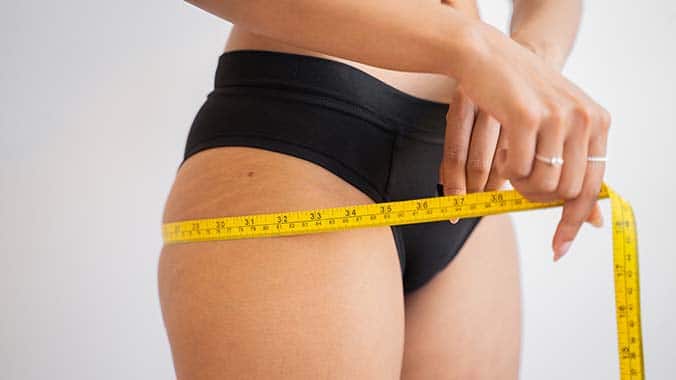
Measuring the circumference of various areas of the body can describe the body’s distribution of fat.
Waist circumference is a good approximation of visceral fat and metabolic syndrome.
To perform these measurements, get a locking flexible measuring tape.
And, obviously, the biggest advantage is that you can brag about how big your arms are.
Skinfolds
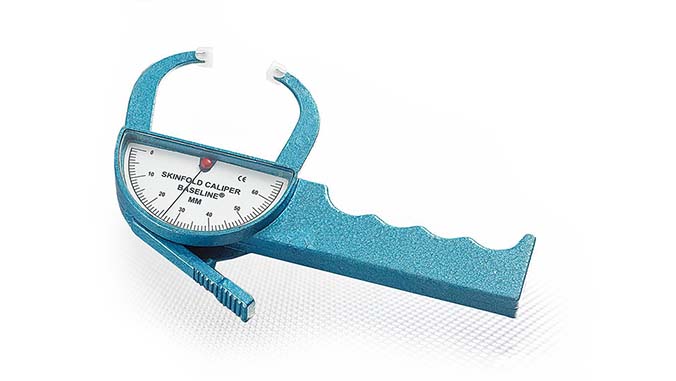
Skinfolds require gently pinching the skin and measuring its thickness with skin calipers like those pictured above. This measures subcutaneous fat storage, but cannot access visceral or ectopic fat.
When metabolic diseases are not of concern, skinfolds are an excellent way to track body composition. They work well for bodybuilders.
There are calculators that will convert the measurements to body density and then body fat percentage as well. This approximation will be less accurate if more body fat is stored around the organs.
The biggest drawback of skinfolds is just that it requires a skilled practitioner to perform the measurements, but they’re useful if you have one available.
Bioelectrical Impedance
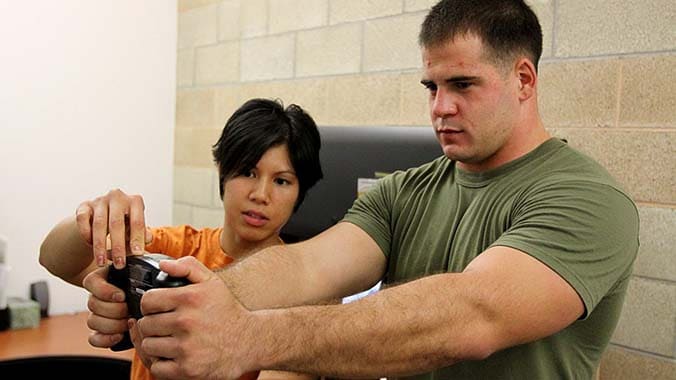
Bioelectrial impedance analysis (BIA) measure the resistance of the body to an electrical impulse, uses that to estimate total body water content, then uses that to estimate body composition.
BIA is subject to many confounding variables, such as hydration status, hormonal status, and electrode placement. Thus, the measurements can be imprecise.
This method of measurement is completely pain free.
Though the numbers might not be particularly precise or accurate, BIA is very convenient. The body weight scales that tell you your body fat percentage use BIA to do so.
Underwater Weighing

Hydrodensitometry, or underwater weighing, is highly accurate at measuring overall body composition. It uses the physical law of buoyancy to measure body volume, which is then combined with a scale weight to find body density.
The main drawback is that testing requires the subject to be submerged, adding additional headache to testing. This might be contraindicated for some.
A secondary limitation is that these numbers are an average for the whole body, meaning they don’t give any data on regional distribution of fat.
Air Displacement

Air displacement plethysmography (a.k.a. BOD POD) is another form of densitometry. Think of it as the air version of underwater weighing. The results of each are similar, but the air version is more convenient and the water version is slightly more accurate.
For these tests, you measure body mass on the scale and then the volume of air displaced while the body is in a sealed container.
DEXA Scan
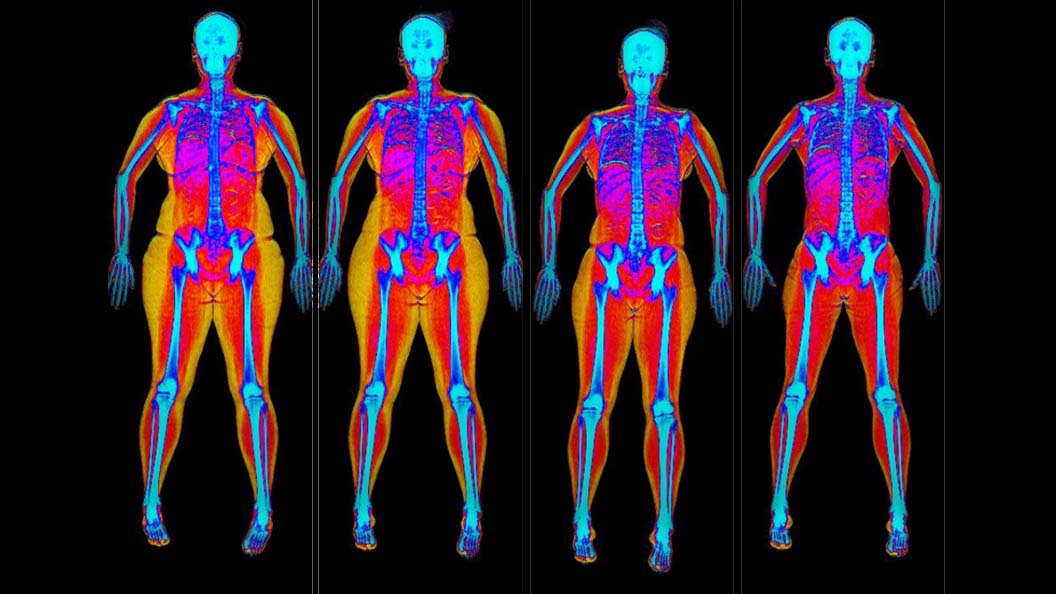
Back when I was in the San Francisco Bay Area, we had trucks come drive around Google HQ to scan your body composition. The trucks had machines to perform dual-energy x-ray absorptiometry (DEXA or DXA). This can be a super convenient option if you’re busy. A typical scan takes fifteen minutes.
The DEXA Scan is a cool measurement to not only approximate body composition, but is also considered the gold standard test for bone density (i.e., to measure for osteoporosis). It is accurate and precise for measuring fat-free mass and bone density, but slightly less reliable for measuring fat mass. The radiation you’re exposed to is safe (we’re exposed to radiation all day, e’er’ day).
The x-rays from the DEXA scan hit the entire body, so you can learn specific details, such as which leg has more mass or how much of your fat is stored around your organs (a sign of high stress and poor health).
CT

Computed tomography (CT) scans can offer highly accurate and detailed information about body composition, including regional analysis of visceral fat, subcutaneous fat, and ectopic fat.
Despite these benefits, CT scans are not recommended as a routine body composition assessment since they are expensive and expose the body to a small amount of ionizing radiation (equivalent to ~100 chest x-rays). They can, however, be used to evaluate patients who have already undergone a CT scan where muscle wasting is a concern.
MRI

Magnetic resonance imaging (MRI) gives accurate and precise measurements. It’s main benefit over DEXA scans is that it gives better information regarding ectopic fat, e.g., fat in the muscle or liver. This is the new gold standard for advanced body composition measurements.
MRI does not expose the body to ionizing radiation, making it a safe option as long as there’s no metal in the body.
Summary
Alright, so there’s a relatively advanced discussion on body composition.
Remember, if you just need to know your body fat percentage, then make an appointment with a local professional and get measured.
If you need a more frequent monitoring solution, then you might consider using a scale with bioelectrical impedance as this is probably the most convenient option.
Skinfold thickness and circumference measurements are decent, low-tech options if you don’t want to mess with the other stuff.
If you need medical supervision for exercise, then you might want a detailed MRI to quantify ectopic fat as that will be a key indicator of your performance.
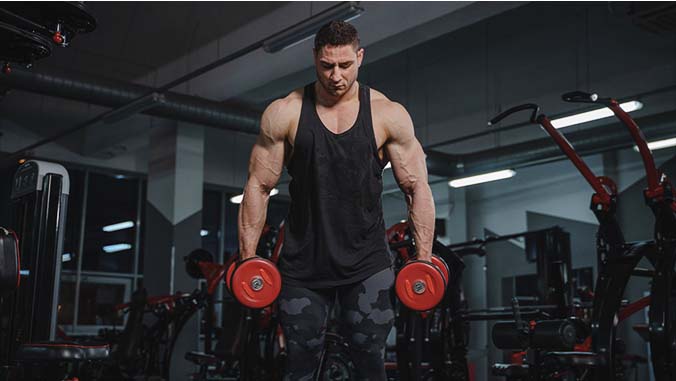
Add some color to this commentary.